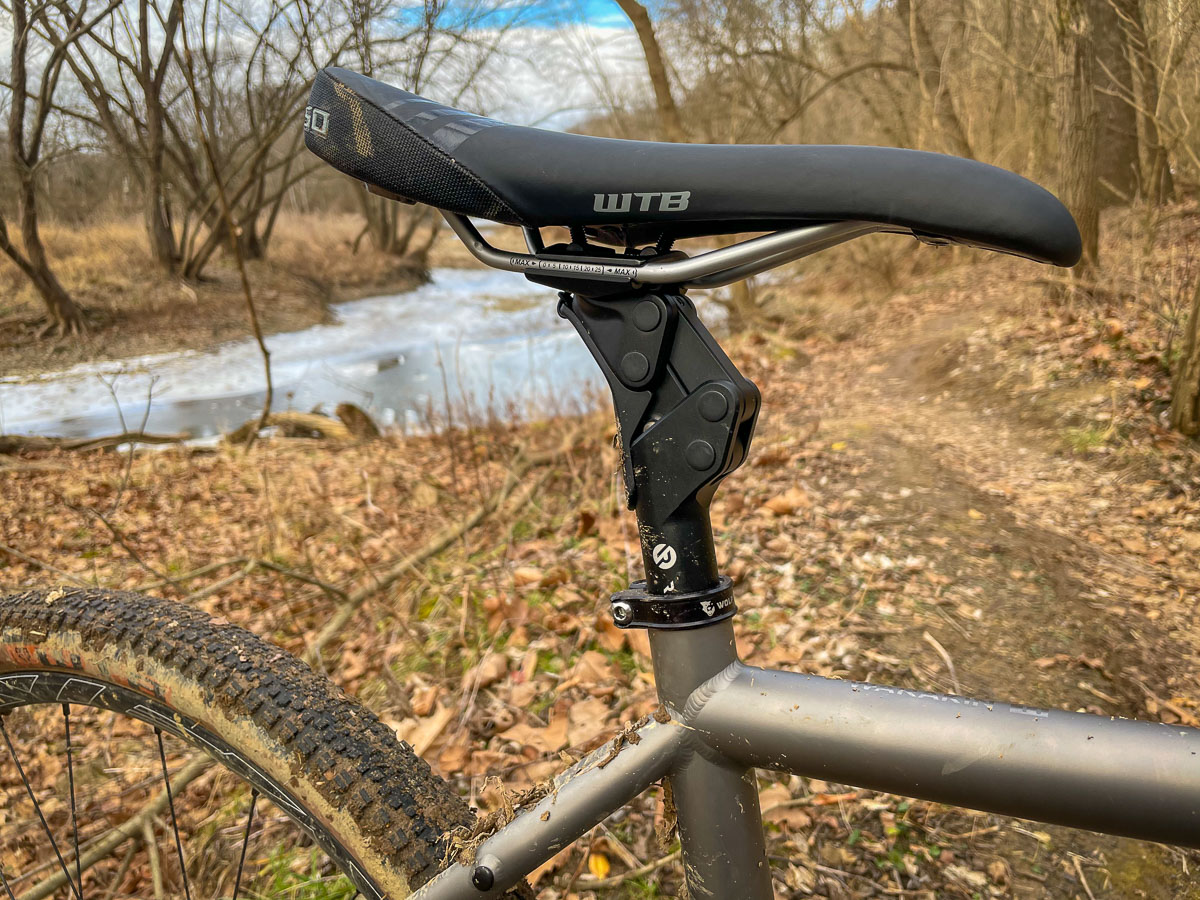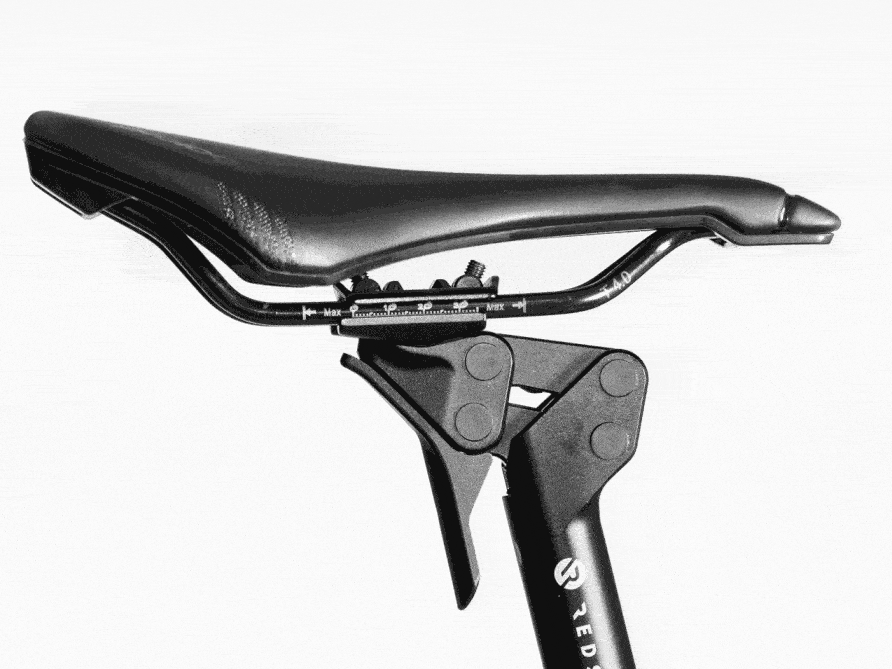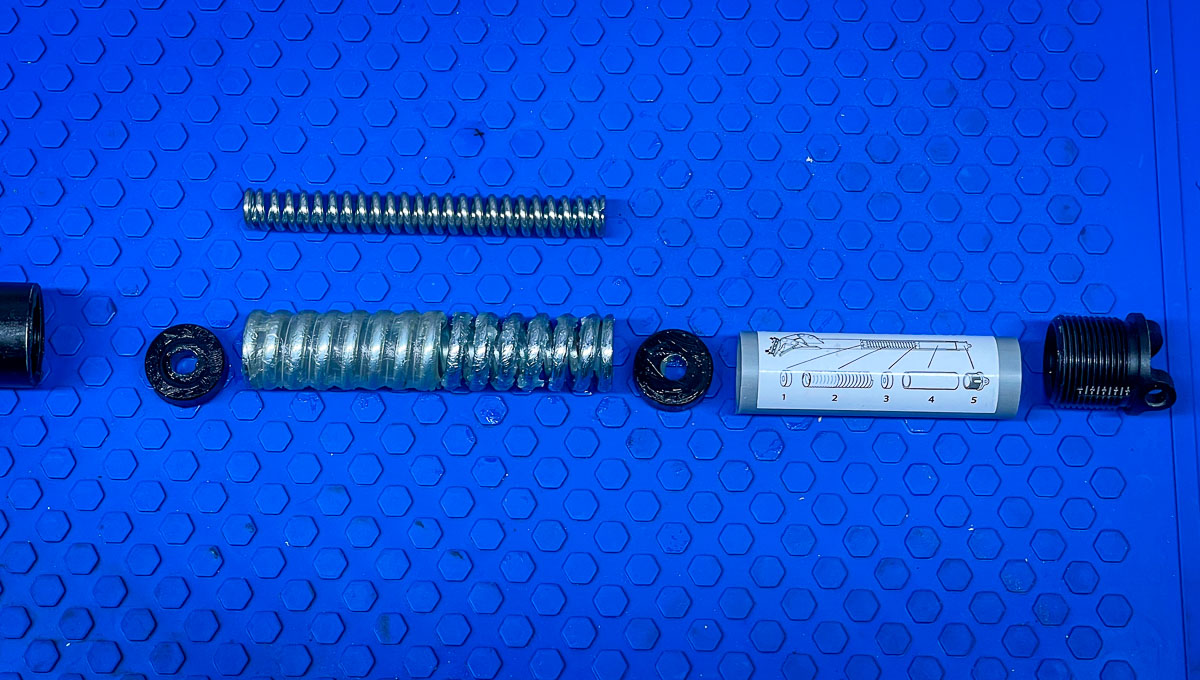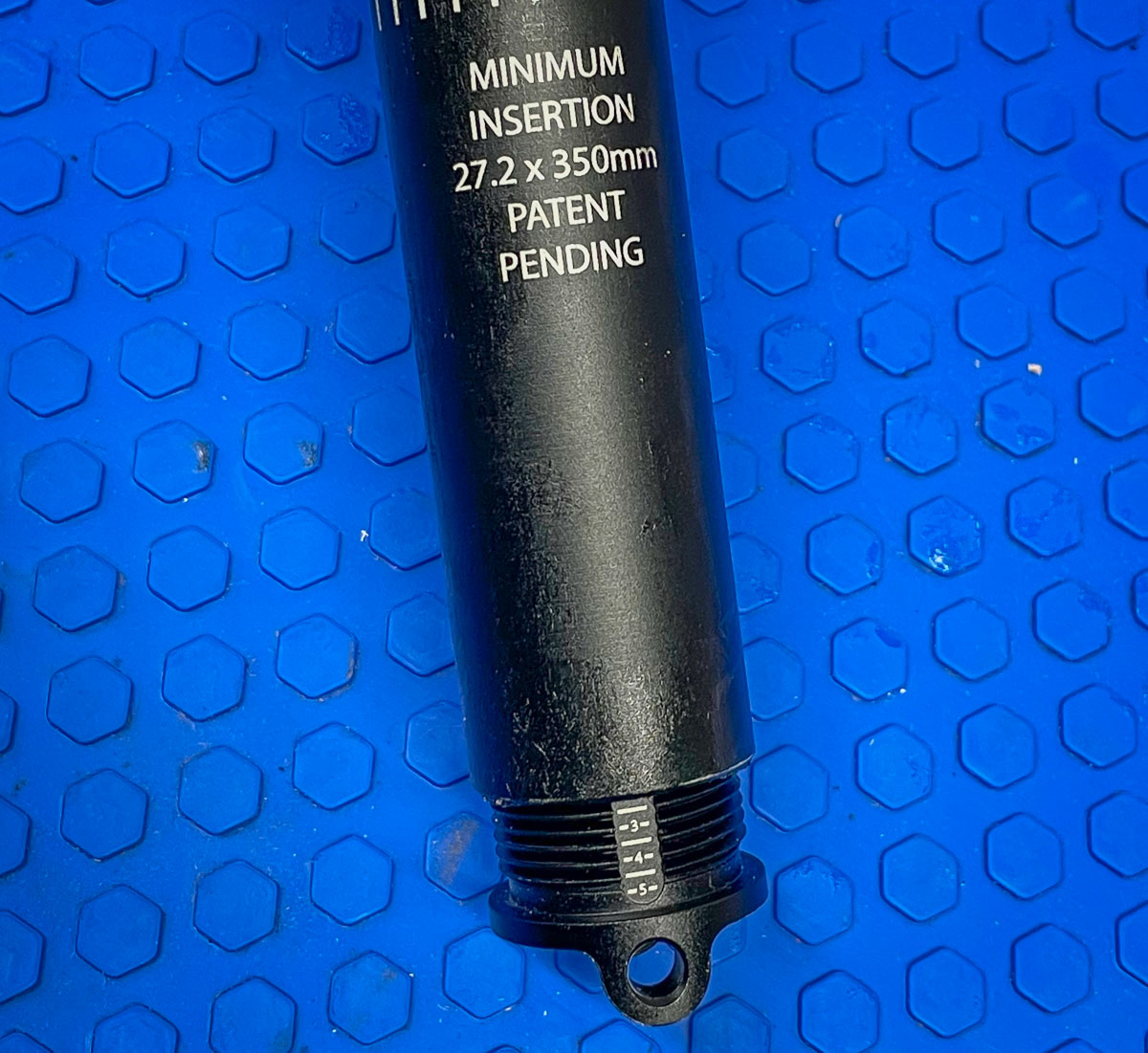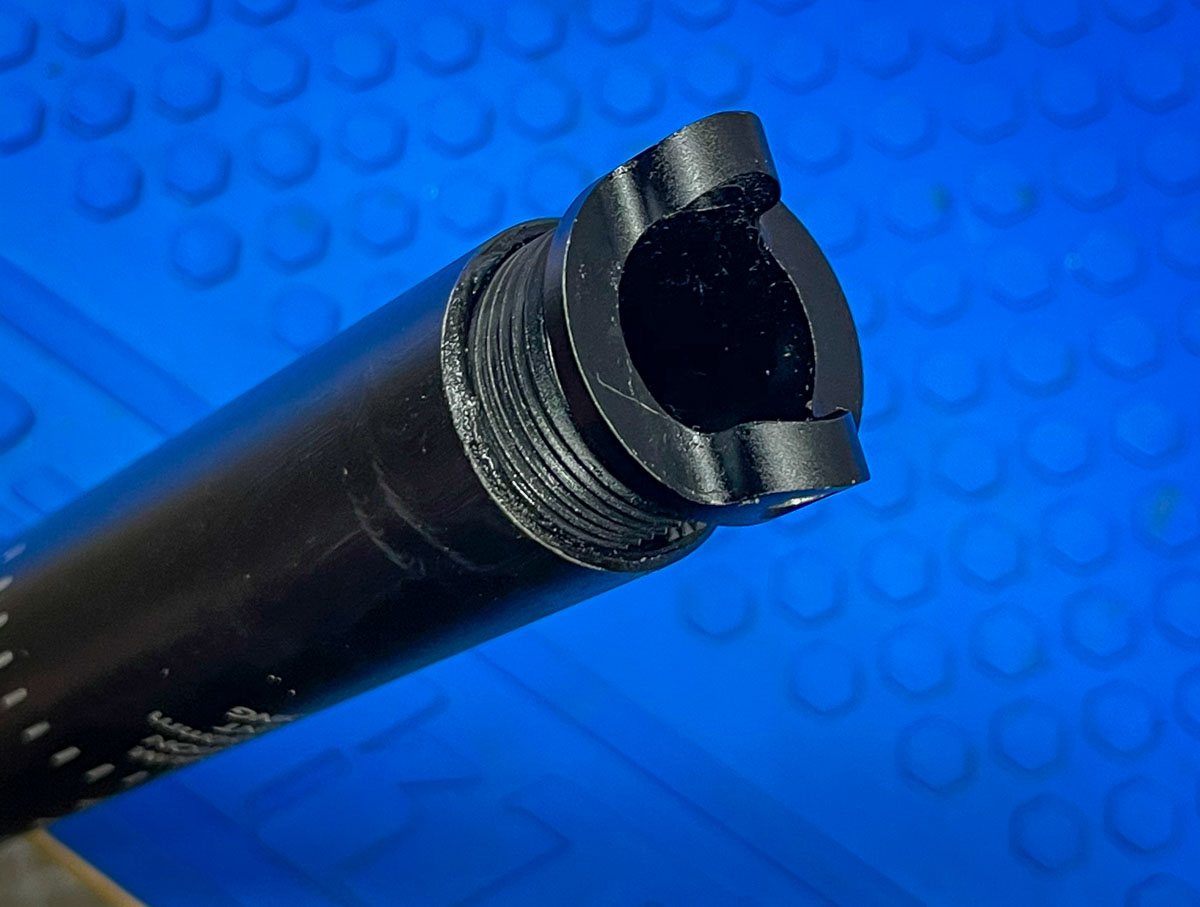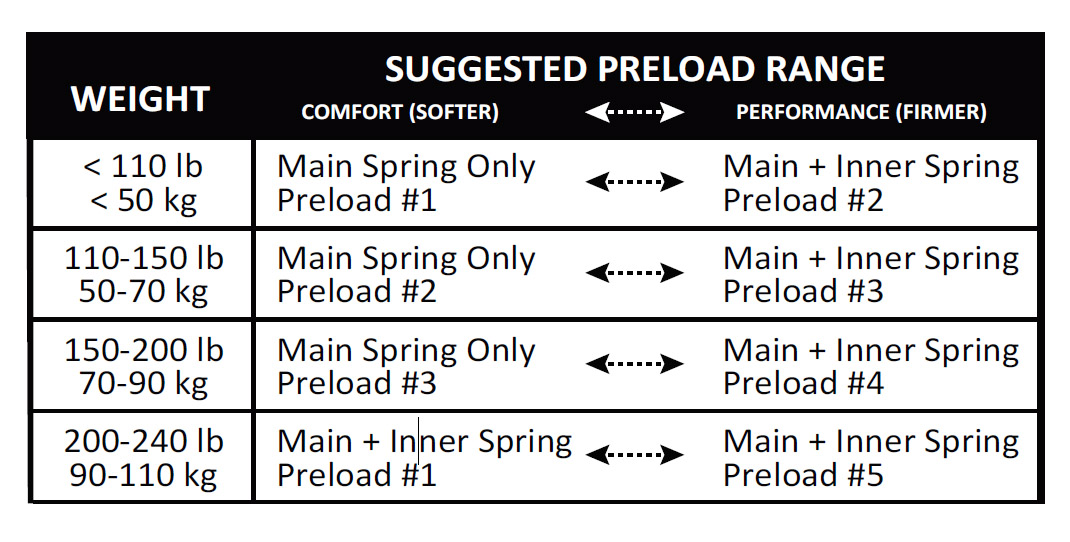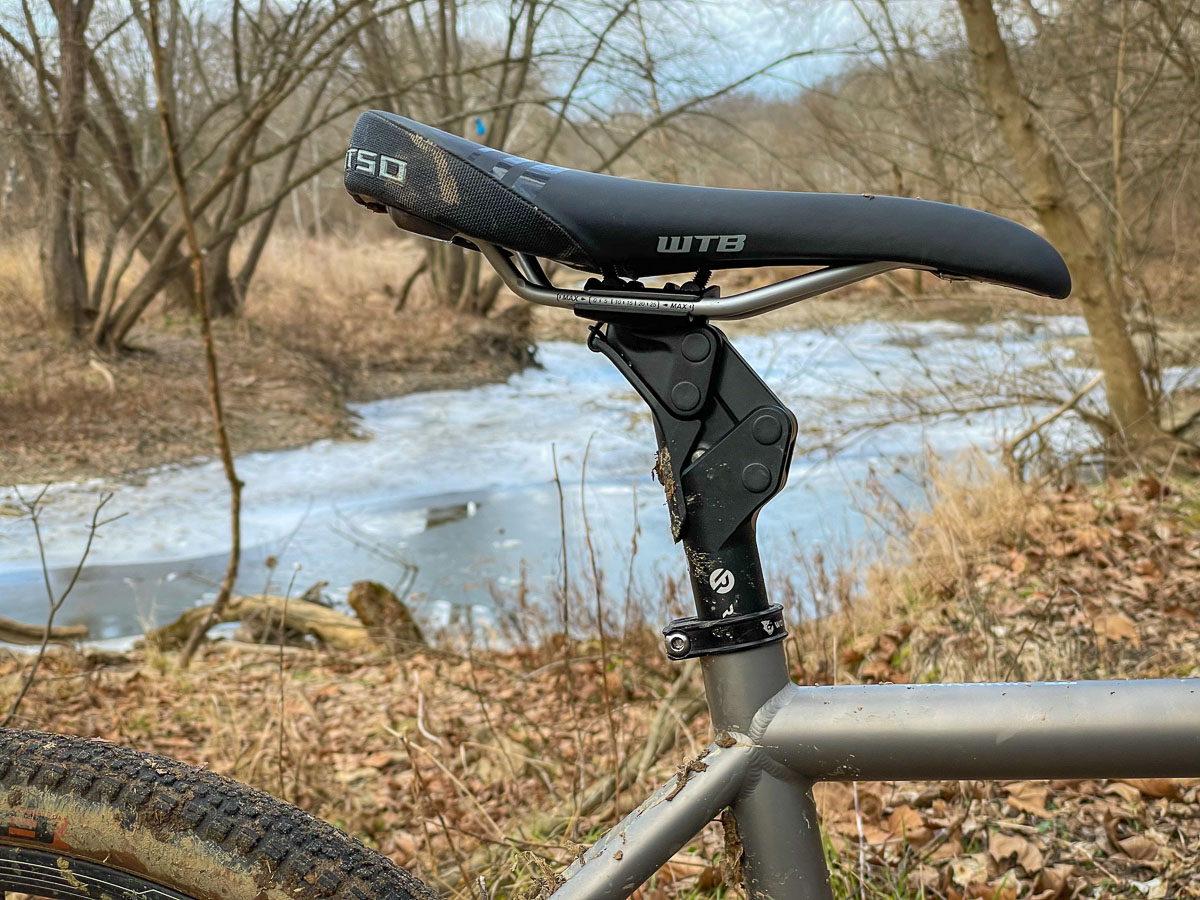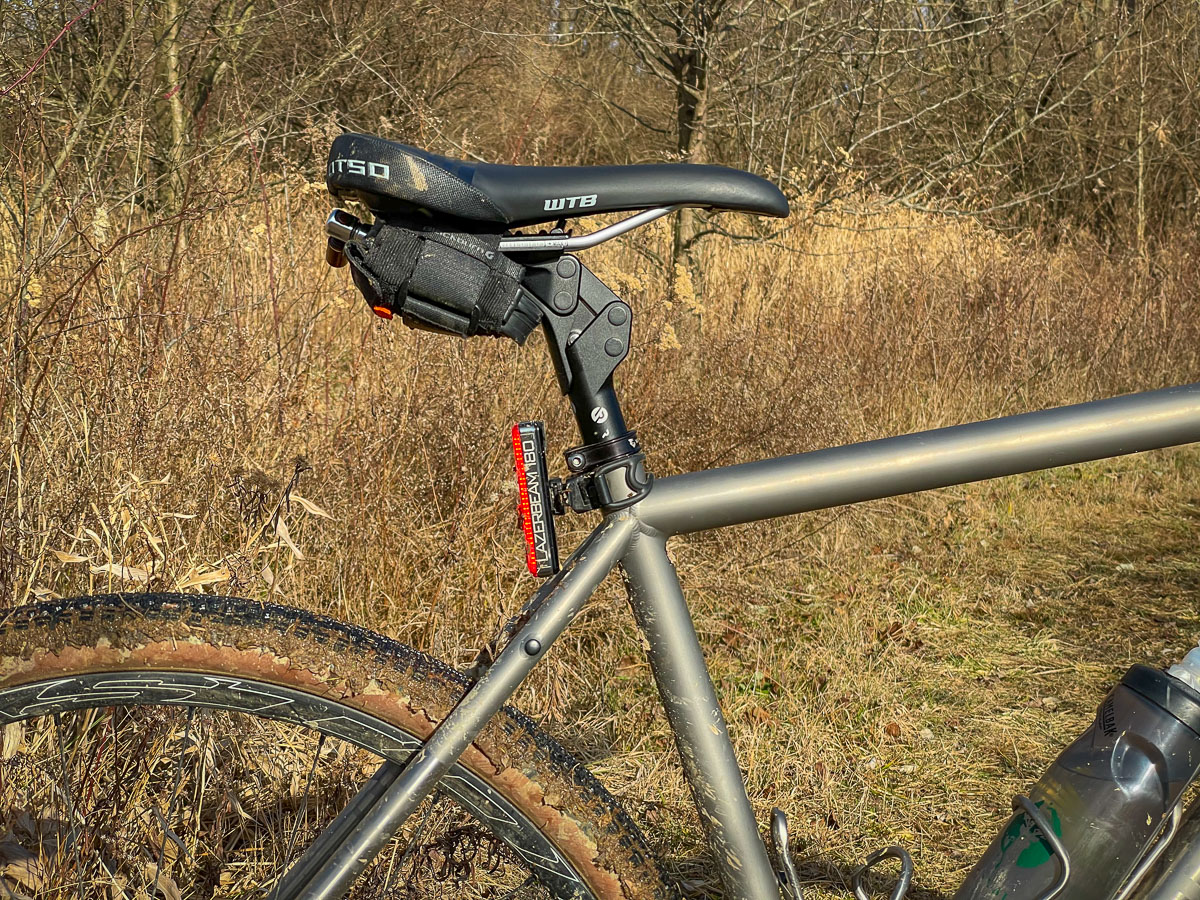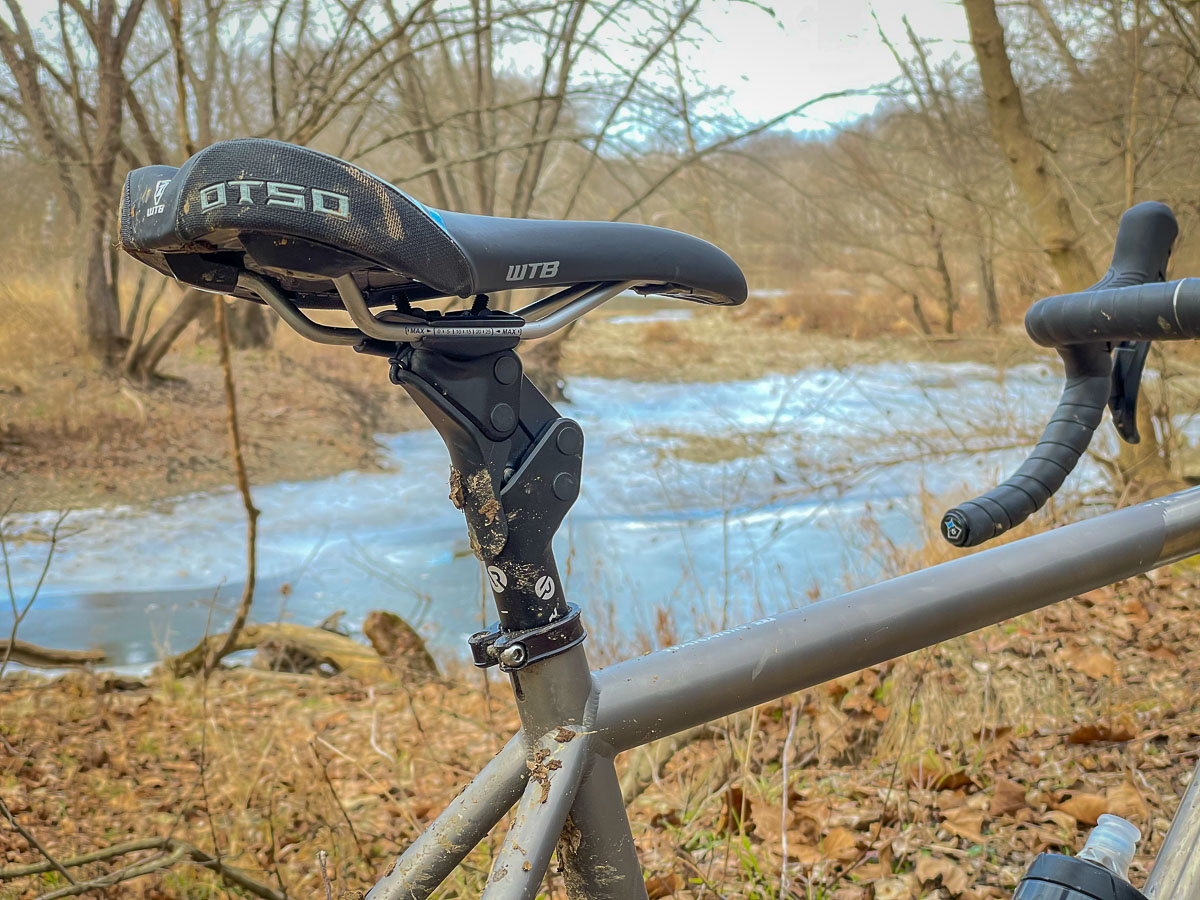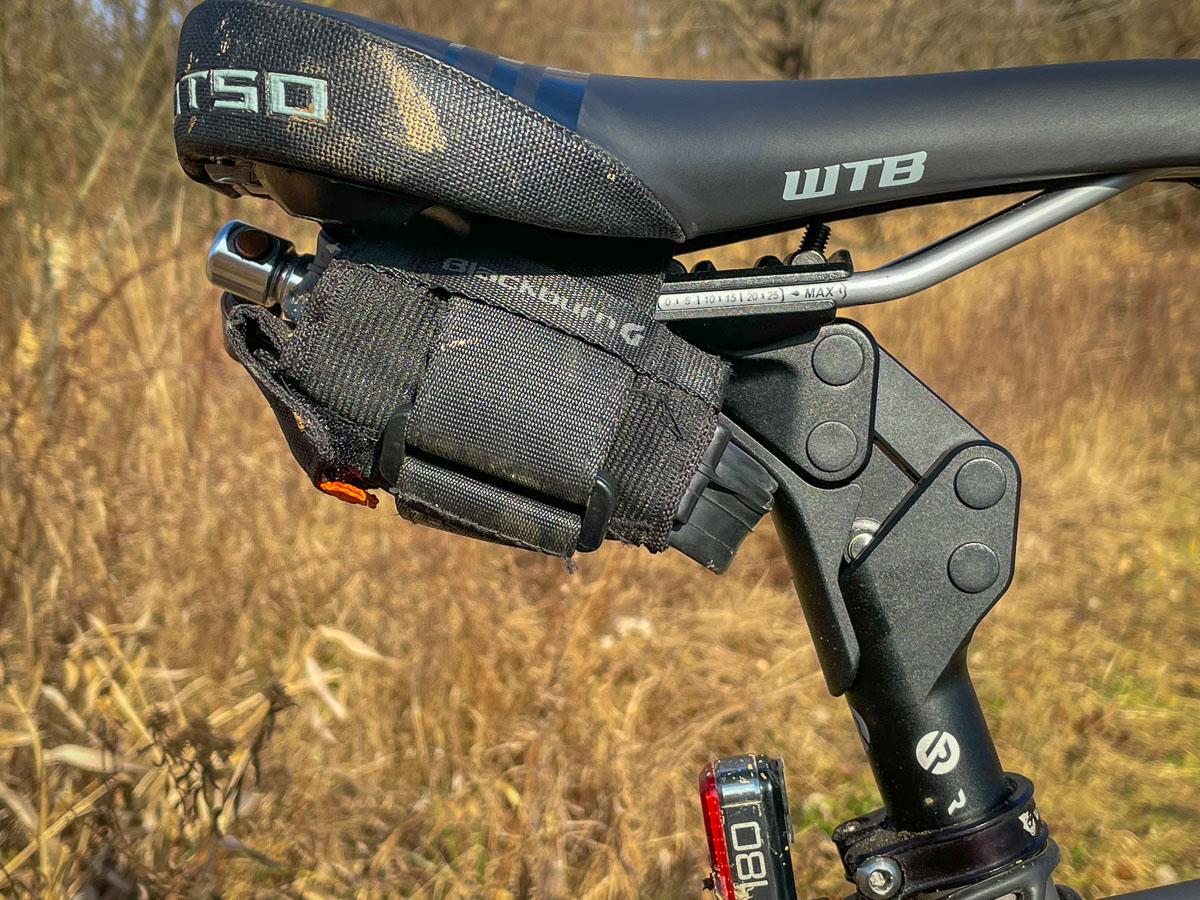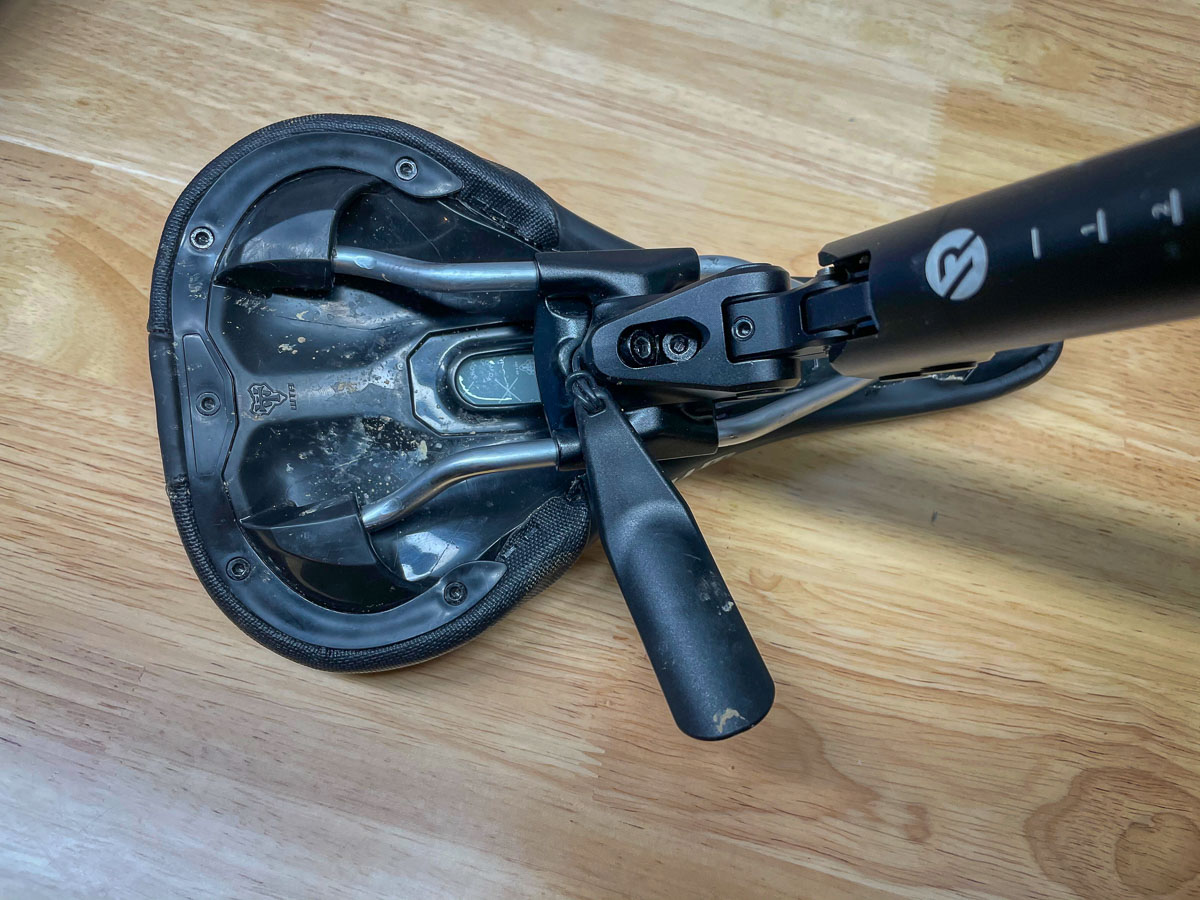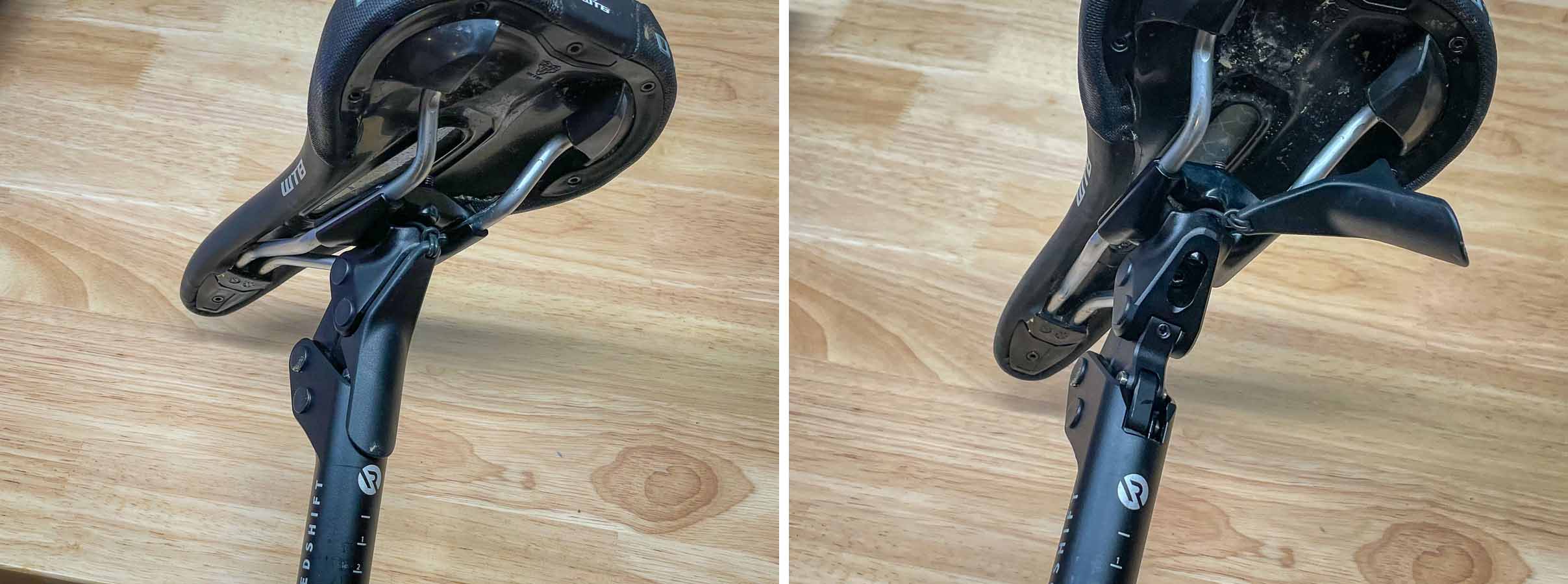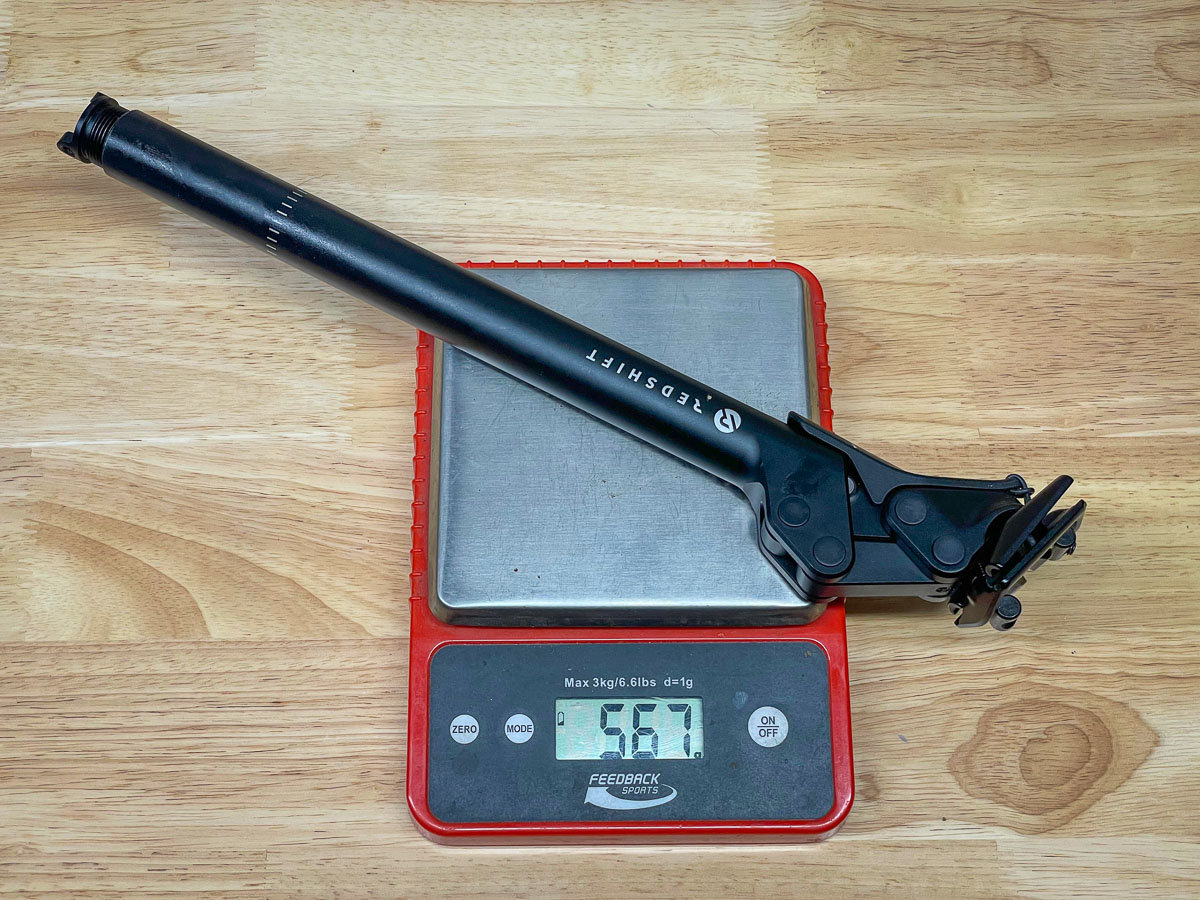Dropper posts might get all the attention these days, but there’s another form of seat post trickery that’s been around for ages. That of course, is the suspension seat post. One of the many ways riders have tried to increase the comfort of their rides, the suspension seat post is experiencing a bit of a renaissance with companies like Redshift Sports offering a new spin on an old idea. But the question remains – is the sleek design of the Redshift ShockStop Suspension Seatpost worth the cash? Yes, probably.
Built with a unique linkage based suspension, the ShockStop Seatpost offers 35mm of suspension travel controlled through the spring inside the seat post. Redshift mentions that they wanted to create a post with travel that was less progressive than those using elastomers which is why they went the coil spring route. Elastomers can work well for shorter travel designs, but they tend to ramp up quickly making it difficult to use the full travel of the post.
Due to the linkage geometry, the suspension remains impressively responsive while also keeping the saddle flat through the full range of travel. The travel does have a slight rearward ‘axle path’, with the offset starting at 7mm and growing to 12mm at 25% travel. Like other suspension, when properly set up, the ShockStop will have a bit of sag. Redshift recommends starting with about 6mm or 20% from the top of the travel range when sitting on the bike in a neutral position. Because of this, you’ll want to set your saddle position a bit higher, and farther forward than you usually would. Redshift recommends starting with your saddle height 6mm higher than usual, with saddle position 6mm farther forward.
Internals
Inside the ShockStop seat post, things are fairly simple. Under the Preload adjustment plug, there’s a Spring Spacer, then a Spring Endcap, followed by the Main Spring, and then another Spring End Cap. If you want more support than the main spring offers, you can add the included Inner Spring which rides inside the Main Spring for a stiffer setting.
Kudos to Redshift for not only including a very detailed instruction manual with the seat post, but also placing a diagram with the component order on the Spring Spacer itself. No excuses for messing things up here! Note that the heat shrink on the Main Spring is meant to face the top of the seat post – it’s pictured that way on the diagram, so again, no excuses.
Correct setup is critical
With the post fully assembled, preload adjustments can be made very simply. Just place a 4mm hex wrench inside the holes on the Preload Adjustment Plug and turn clockwise to add more preload, counter clockwise to remove it. The plug is labeled from 1 to 5, with 5 being the firmest setting which should only be used with both springs.
Also, the Preload Adjustment Plug and the internals are hollow for a reason. This allows you to run a Shimano Di2 internal battery with the installation kit from Redshift. The “kit” is simply two o-rings which fit around the battery and hold it in place, and is priced accordingly at $2.99.
It’s also worth pointing out that Redshift has updated their suggested preload range since the first ShockStop seat posts went out (including the one in this review). I found that their original suggestions were far too soft for my liking, which made me happy to see that their revised chart above includes both a comfort and performance recommendation which are quite different.
At 150lbs, initially I went with their recommendation of the Main Spring only with preload at #3. This was way too soft in my opinion, especially for more spirited riding. The next step was to increase the preload with just the Main Spring. Eventually, I cranked it up to 4 which is the maximum recommended preload setting with just the main spring. It was better, but I found that it resulted in a ride that was still a little too active, and it was more prone to ‘topping out’ with a thud in certain situations.
Finally, I added the Inner Spring and ran a preload setting of 2/3. This was much more to my liking. The suspension was quite a bit firmer, but still incredibly smooth throughout the travel and resulted in a saddle that seemed to ‘float’ within the travel range. It also seemed to cut down on any top out issues for the most part.
The aha moment came while I was riding the last setup and powering through a very rough section of trail. My concerns about feeling changes in saddle height were replaced by thoughts focused on how much smoother the back of the bike felt compared to the front. On a completely rigid gravel bike, the sensation from the saddle made it seem like it was coming from a completely different bike. In my testing, it’s led me to believe that it definitely allows for better power transfer through rough terrain while seated, and may even offer a noticeable improvement on climbing traction. That last bit is still debatable, but I was blown away by how much traction I was able to maintain in scary slick conditions on a super steep section of trail with the wrong tires. I thought for sure that I’d be walking, but I made it almost all the way to the top, which is difficult to do on a dry day.
What about heavier riders? My current set up still has quite a bit of preload you can dial in (which stiffens the feel of the post without reducing the travel). But heavier riders may still find that they should be running a stiffer spring. For those riders, Redshift is working on a new stiffer spring option that will include both the main and inner spring with springs made from a material that is 25% stiffer. This option will likely be available for sale from Redshift in the new year.
So this thing is awesome, and you should definitely buy one. Right? Well, as good as it is, there are some drawbacks…
The design of the linkage, while enabling buttery smooth travel, does take up real estate on the post. Redshift managed to package the ShockStop Seatpost into an impressively sleek package that doesn’t look out of place on a modern bike, but you do have to have at least 90mm of exposed seat post to the saddle rails to run the post. This includes extra distance as the magnetic ‘fender’ moves down with the saddle as the post moves through the travel (though the fender can be removed if needed).
What about seatpost mounted lights?
It was the movement of that fender that got me on my first ride with the post. Not because I didn’t have enough room for the post – but because I didn’t have enough room for a light. I had mounted a light to where I thought it would clear the fender, but the first big bump knocked the light right off the post.
Fortunately, the Axiom Lazerbeam 180 not only has a rubber band that is long enough to fit around the seat tube of the Otso Warakin Ti, it also has an articulating clamp and a tall, skinny design that allows me to position it so it’s still visible to traffic. More reasons it was worth of an Editor’s Choice award.
Another solution? You can remove the Fender entirely. Redshift points out that all of the pivots are sealed and mostly maintenance free – they even state that you should not add any grease or lubrication to the pivot bushings.
In really muddy terrain, the Fender works very well to keep mud out of the works. So it’s probably best to run the Fender unless clearance issues prevent you from doing so.
Can I use a saddle bag?
Saddle bags are fine to use with the ShockStop Seatpost, as they move with the seat post and fender.
Select your (multi) tool wisely
Underneath that magnetically attached fender are the two bolts for saddle adjustment. The post design puts constraints on where these bolts can be located. As a result they are very close together inside a recessed pocket in the post. Unfortunately, their arrangement makes it nearly impossible to use certain multi-tools to adjust saddle position or tighten the bolts in the field.
Because of this, a ball end 4mm hex wrench seems like the best tool for the job to quickly install a saddle. And it’s a good idea to carry one with you on your first few rides to make any saddle changes. But once you’ve gotten your position dialed in, you can probably leave it at home.
Weight & Pricing
Then of course, there’s the weight. At 567g with both springs installed, this post isn’t exactly light. But then again, it’s not far off many dropper posts either.
The ShockStop Suspension Seatpost is listed at $229.99. Only available in 27.2mm diameter and with a 350mm length, Redshift does offer seat post shims for $7.99 that will allow it to fit nearly any frame. If you want the front of the bike to match the feel of the rear, you can also buy the seatpost as part of their ShockStop System which includes their ShockStop Stem. The combo pack is priced at $379.98.
There’s also an option for their just-released ShockStop Stem Pro, which uses additional machining plus titanium hardware to drop the weight of the original by 15% (240g for 100mm Pro stem). The Pro stems can be added to the ShockStop System package for an additional $64, and they’ll ship in February.

Verdict
Honestly, I’ve never really been a fan of suspension seat posts. I’m not sure the ShockStop changes that, but it’s come closer than any other post before it. I would say that I’m very sensitive to small changes in saddle height, which makes it hard to get used to a seat post where that is constantly changing.
However, when driving the bike through rough terrain, the ShockStop is a thing of beauty, and works exactly as promised. It allows you to stay seated while putting down power, and may make it easier to maintain traction. Overall, it seems like an incredibly easy and effective way to add a high degree of comfort to any bike, whether that’s a gravel bike, MTB, or even road or e-bike. But there is still some pedaling induced movement that is noticeable on pavement, which may be a turn off for some. I would guess that most riders would get used to this feeling eventually, but that’s up to the individual.
Rather than a bouncy shock absorber with a saddle mounted on top, the ShockStop really feels like you’ve added working suspension to your bike. Realistically, if you’re in the market for a suspension seat post, you really can’t go wrong with the ShockStop. I would say it’s category leading, and almost convinced a long-time suspension seat post skeptic to keep it on their bike for good.
